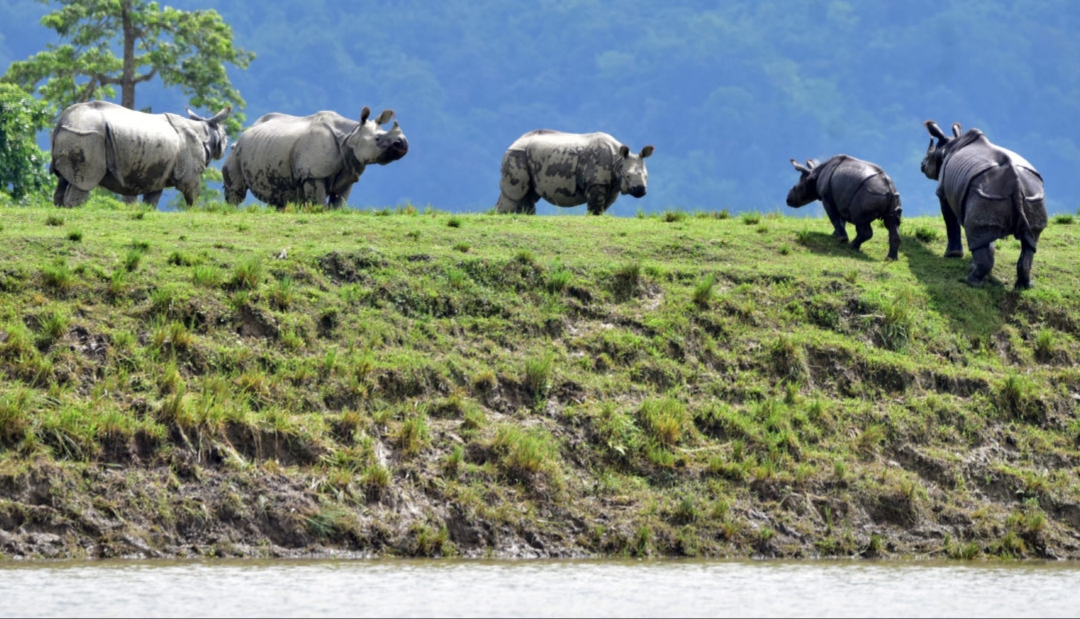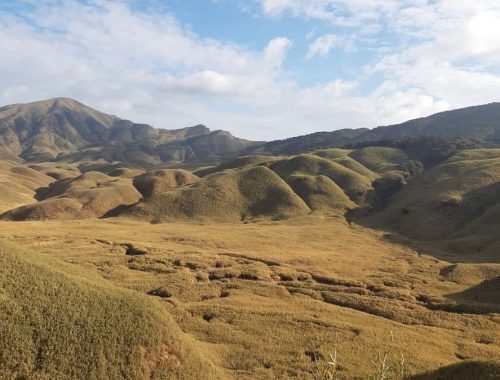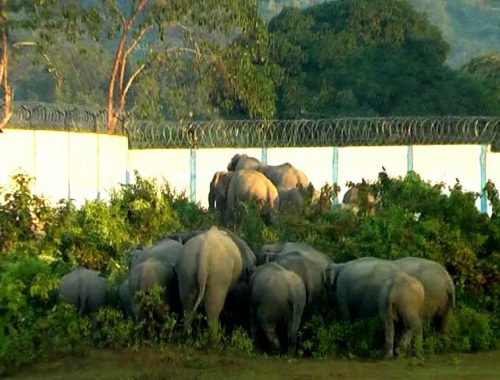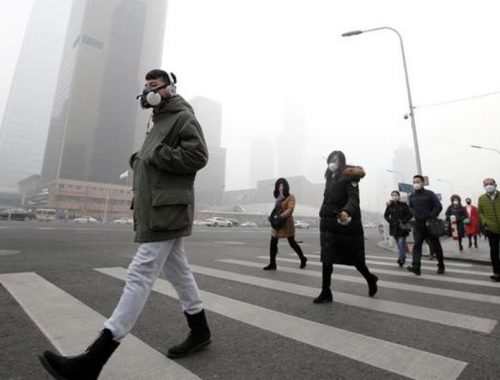MUBINA AKHTAR:
One-horned rhinoceroses move to higher ground in the flood-affected area of Kaziranga National Park in Nagaon district, Assam, July 16, 2020. Photo: Reuters/Anuwar Hazarika.
Guwahati: Prabin Saikia’s family couldn’t believe what it saw last week. A juvenile tigress was resting inside their warm home at Baghmari, in the Bagori range of Kaziranga National Park (KNP). The family stayed out of the house while a team from the Centre for Wildlife Rehabilitation and Conservation tranquilised the tiger and transported her to the centre, to be released in the wild two days later. The team had also moved another tiger a few days earlier, from a goat shed in Kandulimari village in the park’s Agoratoli range.
On July 18, a rhinoceros had been spotted trying to cross National Highway 37 near KNP, but it moved slowly, probably exhausted after many days of navigating surging waters and hunger. At one time it sat down on the road, stalling traffic for hours.
PIN IT
“I found it has seeing difficulties that made it extremely difficult for the animal to find safe refuge,” K.K. Sarma, a veterinarian and wildlife expert, said. “When ultimately it climbed [back up], it was not willing to move away.” Fearing the animal might collapse, park authorities treated it near the highway instead of risking its life with transportation.
Rare and endangered wildlife strayed out of the protected area to escape the floodwaters and were also seen taking refuge in tea plantations.
Heavy monsoon rains lashed Assam since the third week of June, leaving most protected areas in the state inundated.
According to KNP authorities, about 120 animals, including 11 one-horned rhinoceroses, have died in the current flood. However, according to Hari Gogoi, a member of a local NGO, “There can be no full count of the animals until floodwaters have receded,” he said, adding that the final count may thus be higher.
The Central Water Commission had issued a severe flood alert at 11 pm on July 20 for the Brahmaputra near Tezpur, which lies across the river from the park.
On June 29, forest guards in KNP’s Bagori range reported the first rhinoceros casualty in this year’s floods, to be followed hours later with a report of another death from Pobitora Wildlife Sanctuary. Pobitora has Assam’s highest density of rhinoceroses, and currently about 90% of its land is under water, according to authorities.
Toll on wildlife
The situation isn’t very different at KNP, especially since the Brahmaputra river rose past the danger level at Dhansirimukh on July 12. With most highlands submerged as well, animals attempted to cross NH 37 to take shelter on the Karbi Anglong hills. NH 37 cuts through KNP, and the district administration has imposed a speed limit of 40 km/hr to try and keep animals from being run over. Even so, there were reports that dozens of hog deer have been run over by speeding vehicles.
As the floods push many animals closer or into safer ground, they become easy targets for poachers. Authorities in charge of protected areas had set up camps to look out for the animals, but the floods didn’t spare many of them either. Camps on KNP’s northern boundary, said to be most vulnerable to poachers, remained unmanned. In previous years, authorities have often spotted rhinoceros carcasses with their horns hacked, off after floodwaters receded.
Three weeks ago, the flood swept an elephant away from her calf. People in the area noticed her on July 2 near the Rajiv Gandhi Orang National Park, and reported she seemed tired and unwilling to move. The pachyderm, tired, weak and partially blind, had been tranquilised before it was moved to a forest nearby.
The rescue team with the rescued elephant (centre). Photo: Bhaskar Choudhury
PIN IT
“Forest officials kept track and ultimately we could manage to dart it with tranquilisers at Dakhola, under the Palasbari revenue circle, some 200 km from where she was first seen,” Bhaskar Choudhury, who led a rescue team of veterinarians and forest officials from Kamrup district, said.
Similarly, in Majuli, a juvenile elephant had become separated from its herd and was spotted in Harmuti, near Lakhimpur, some 50 km away.
Almost every year, the number of animals that perish in the floods is much higher than the number of animals that are rescued and/or rehabilitated.
The riparian flats typically flooded by the Brahmaputra are largely grassland, savannah and swamp forest, and these lands are home to many of the world’s great one-horned rhinoceroses, elephants, tigers, swamp deer and Asiatic buffaloes.
(Mubina Akhtar is a journalist and activist based in Guwahati.The report first puublished in the Wire)




